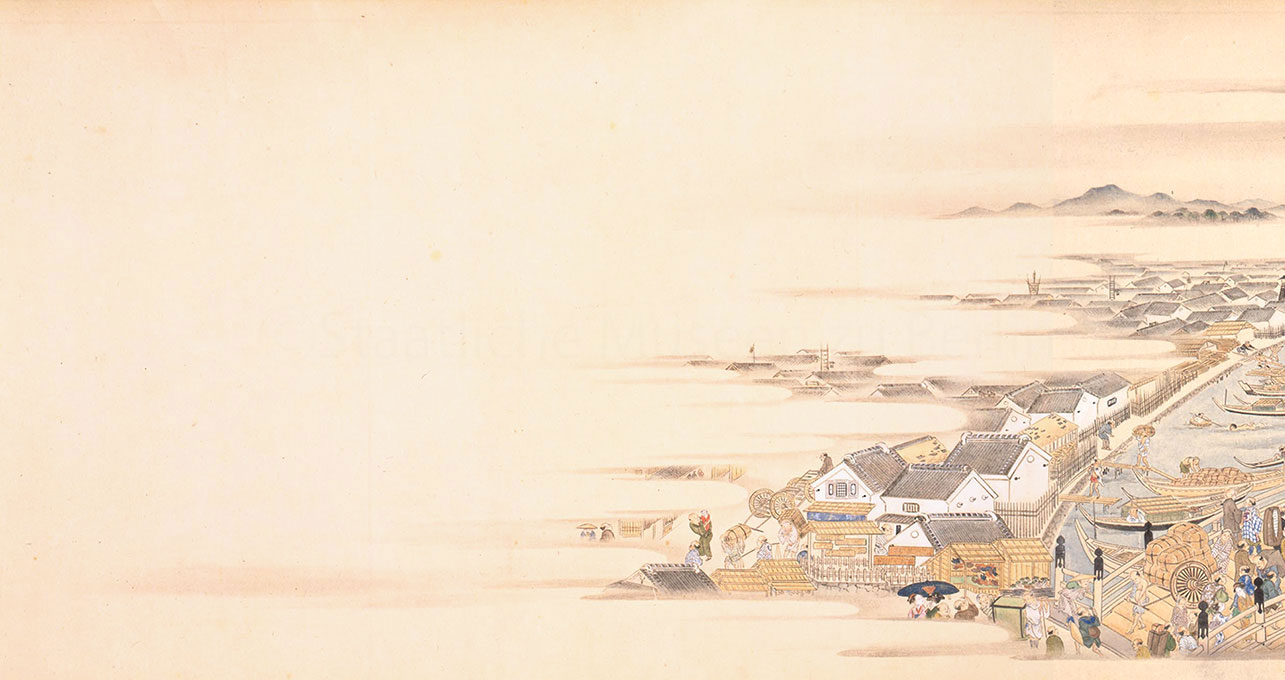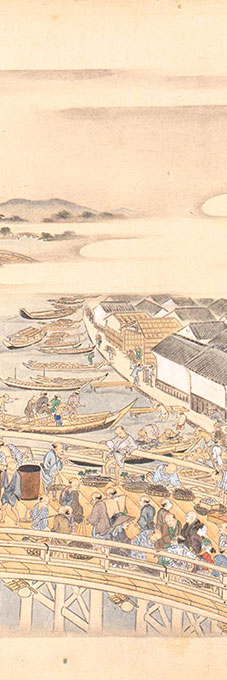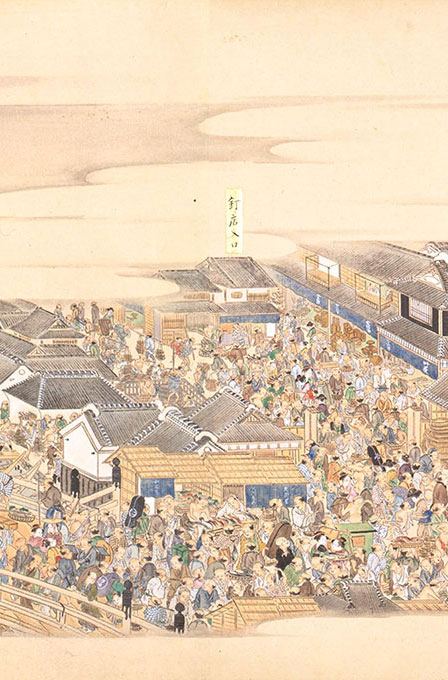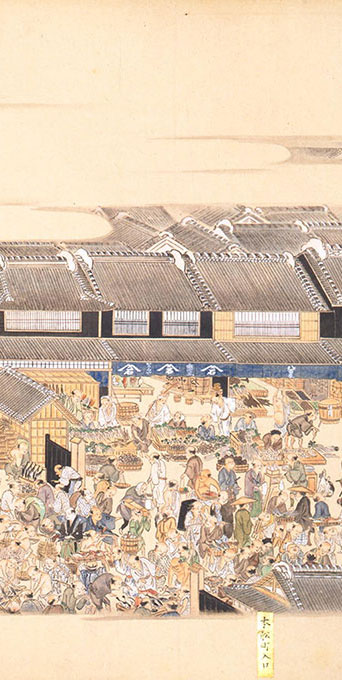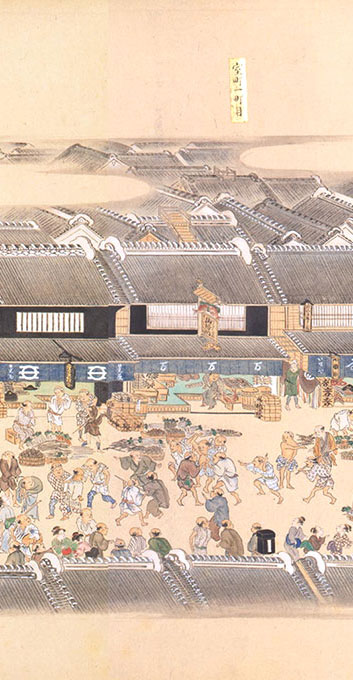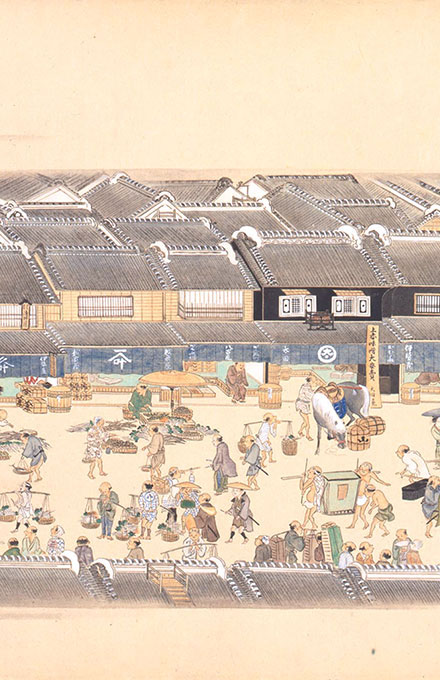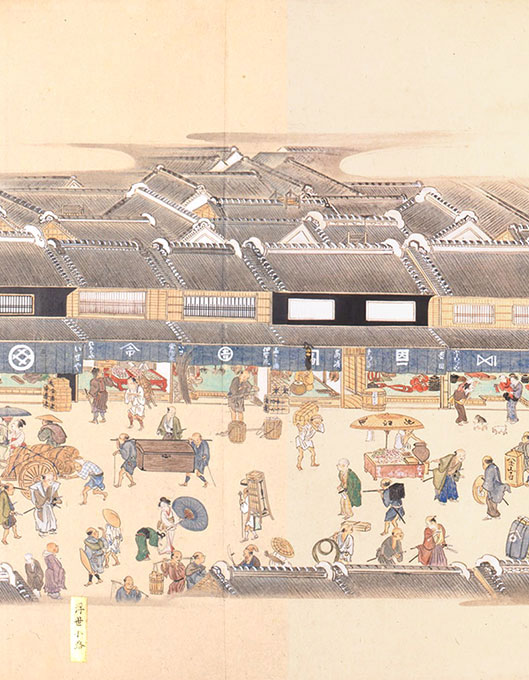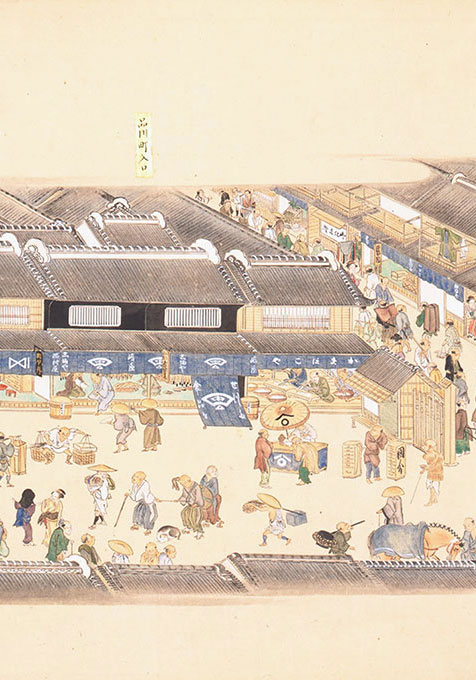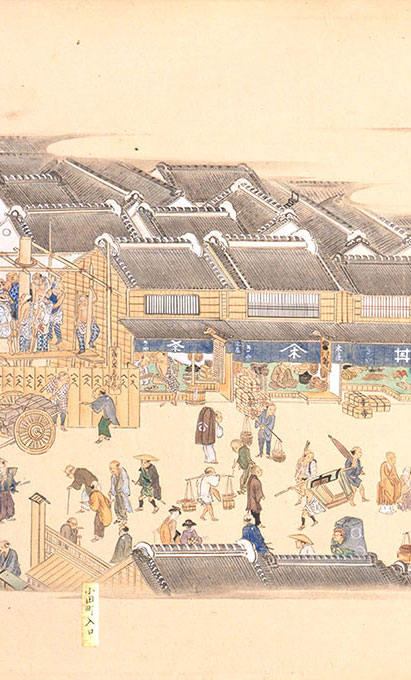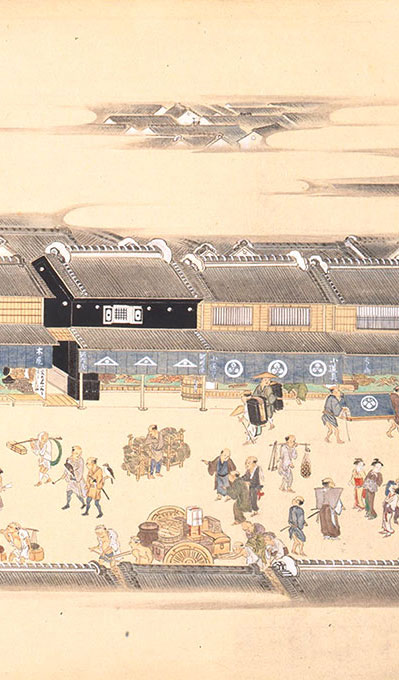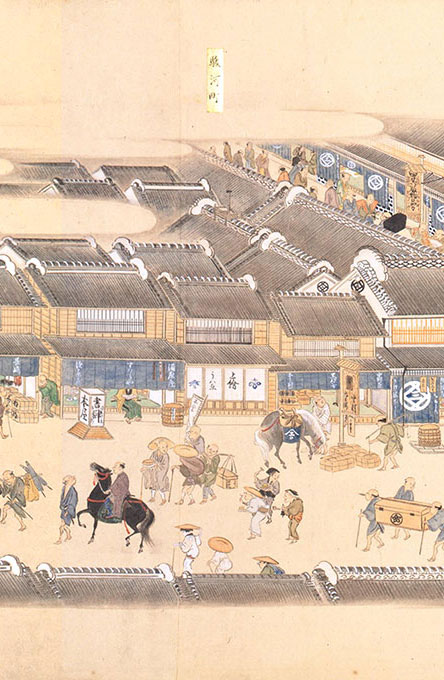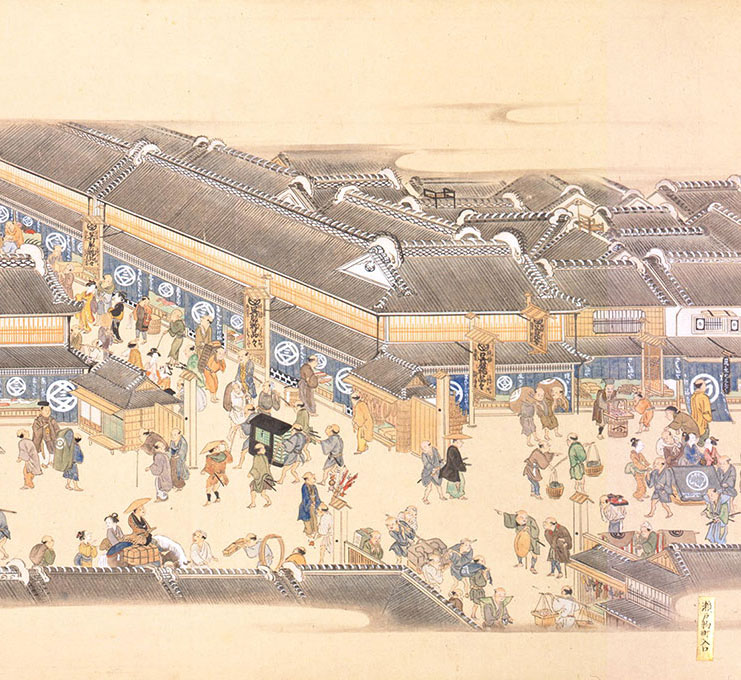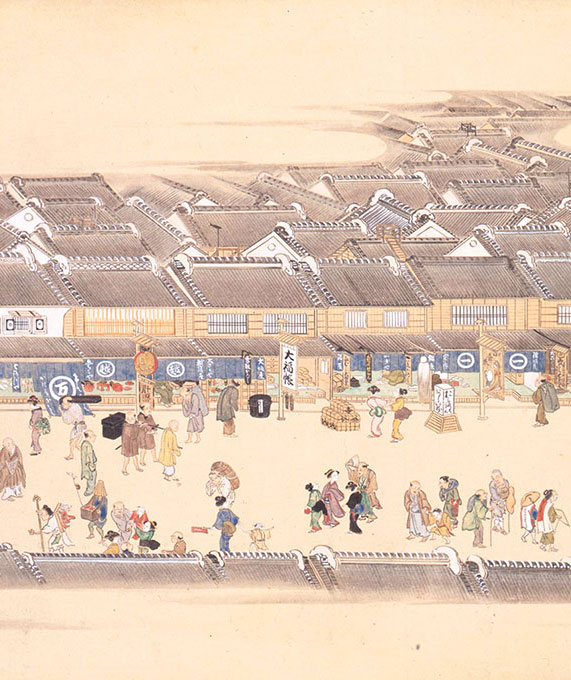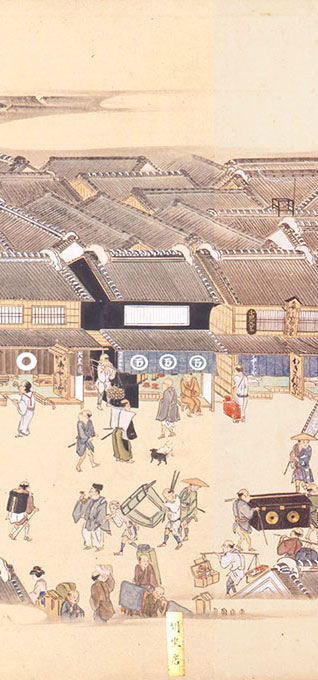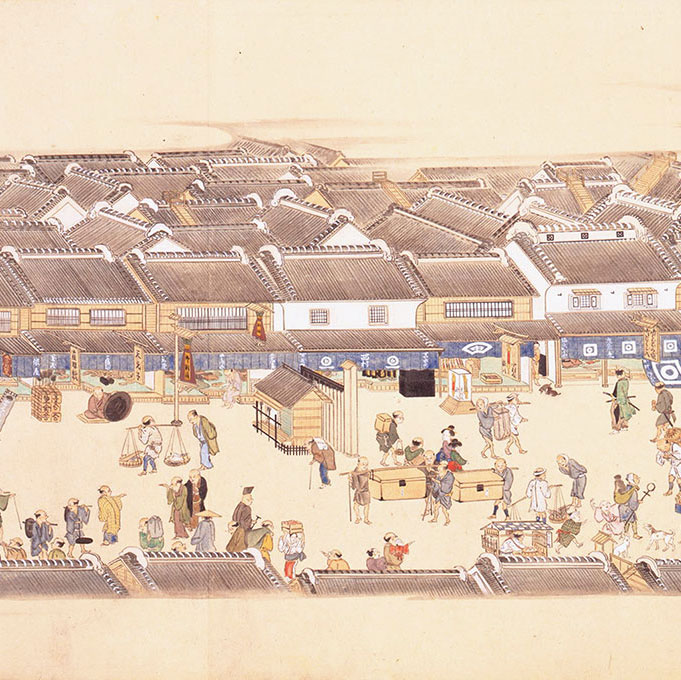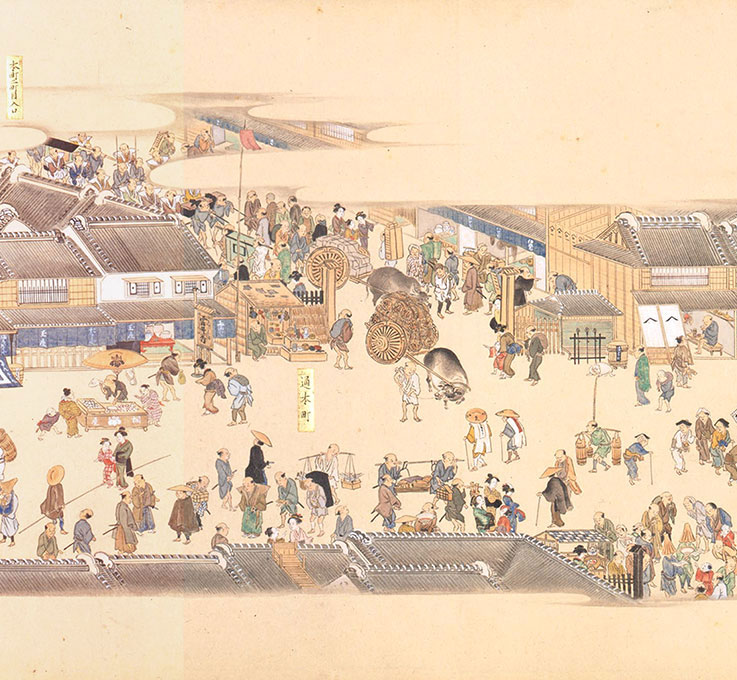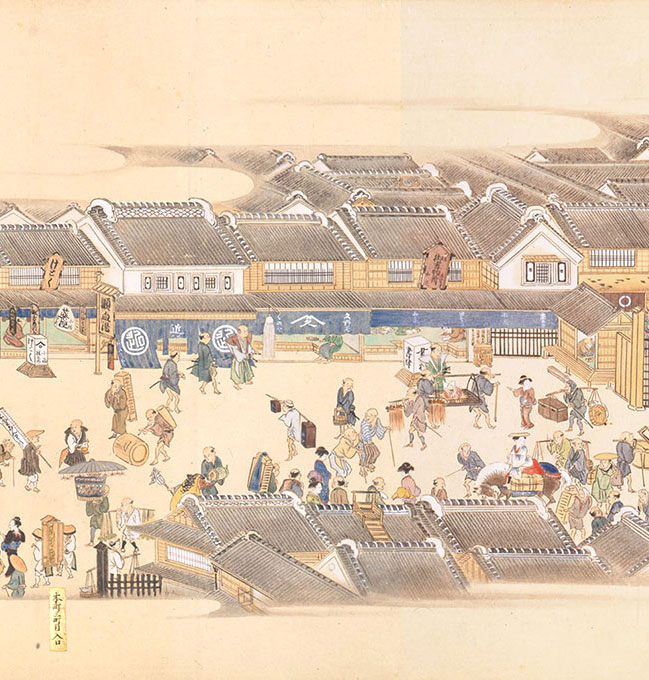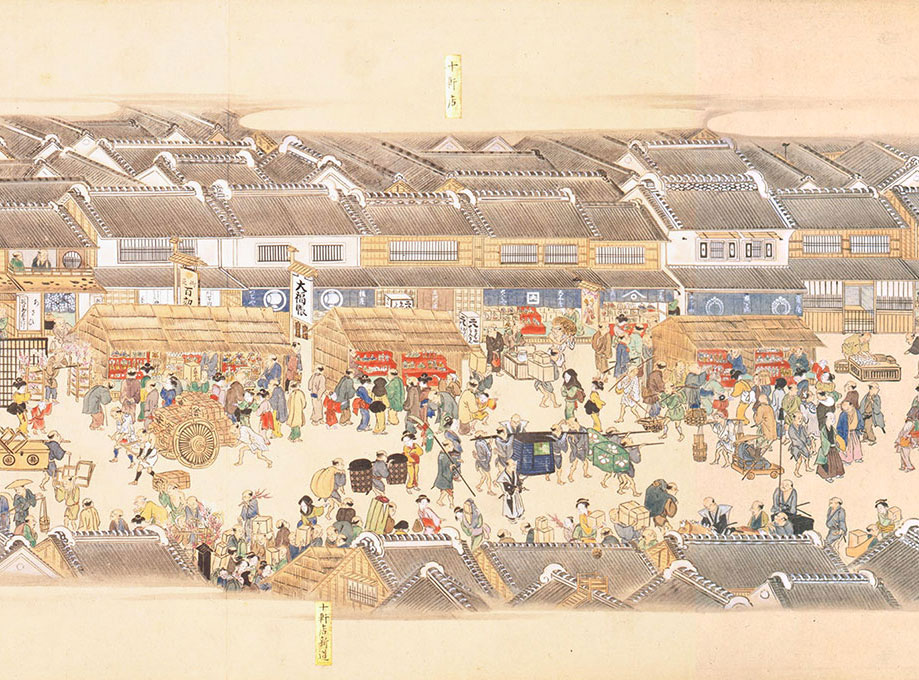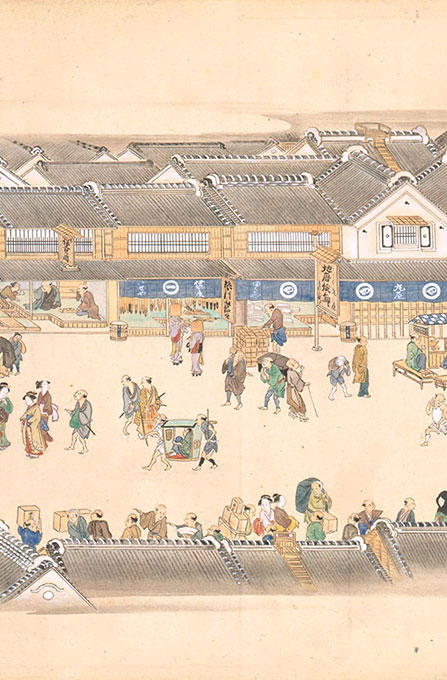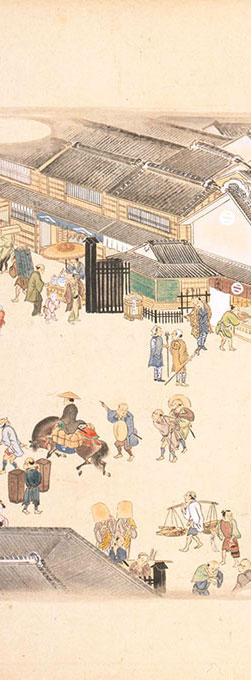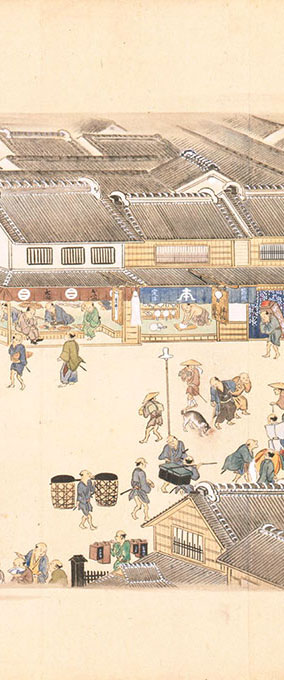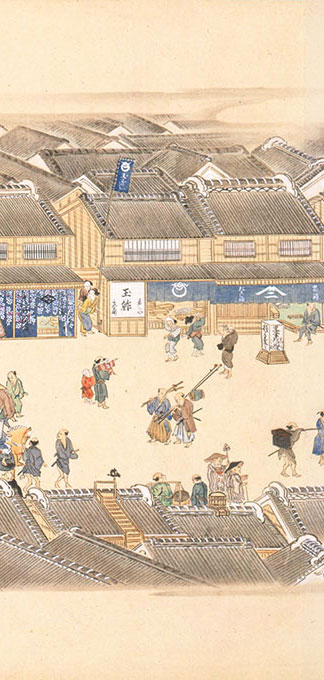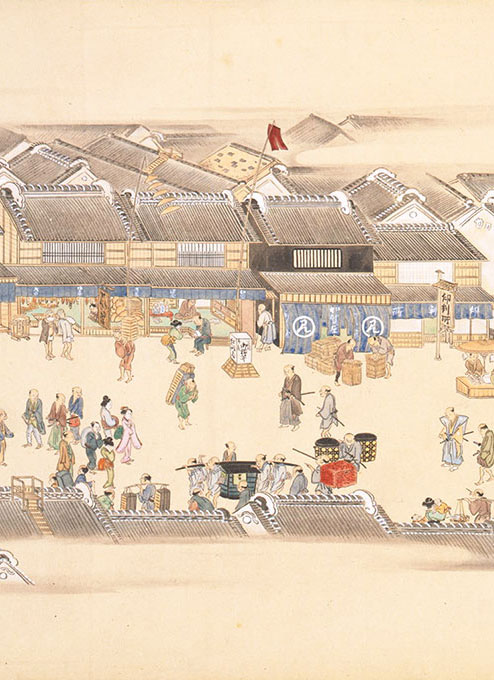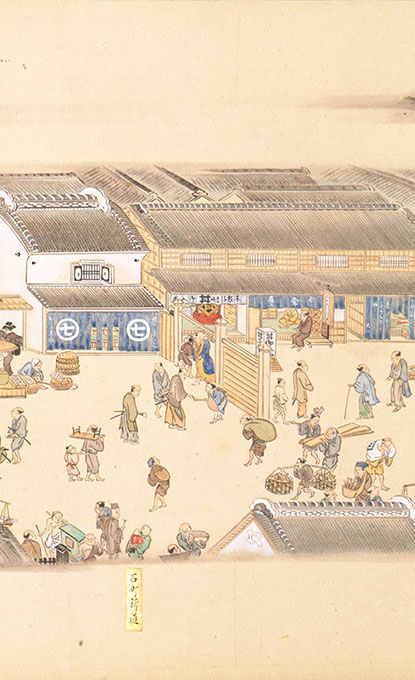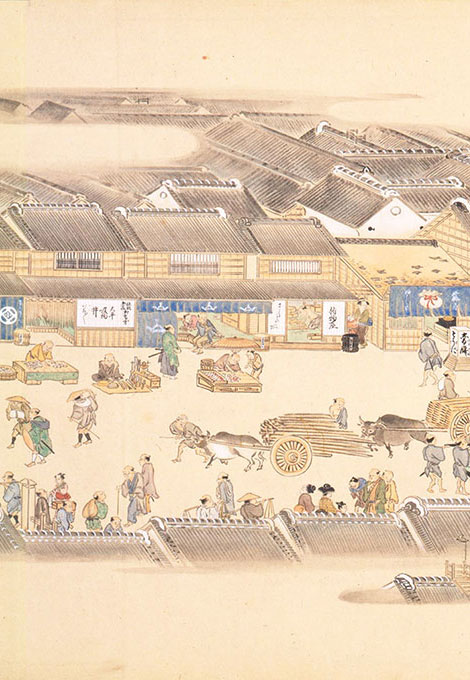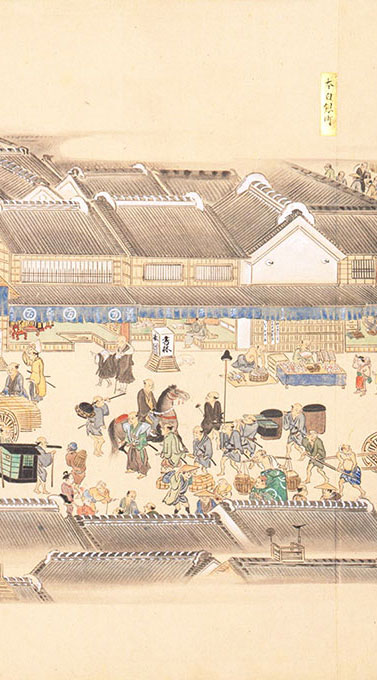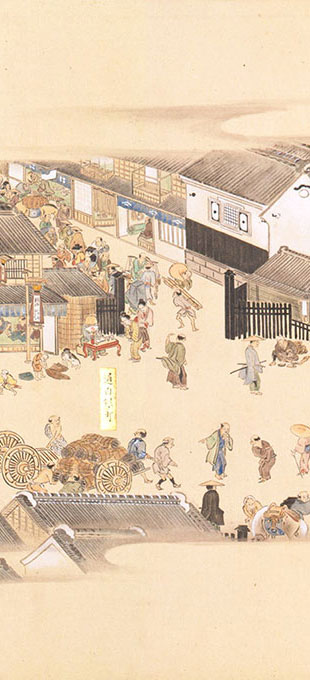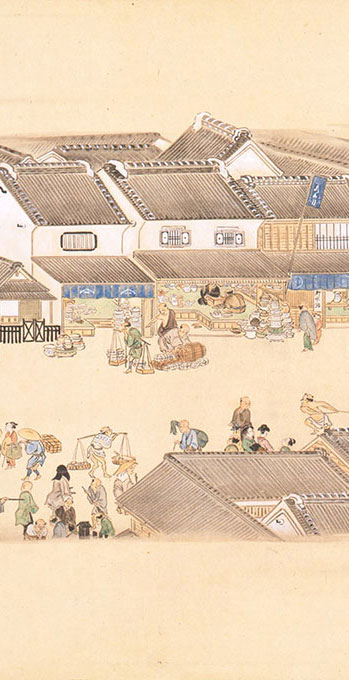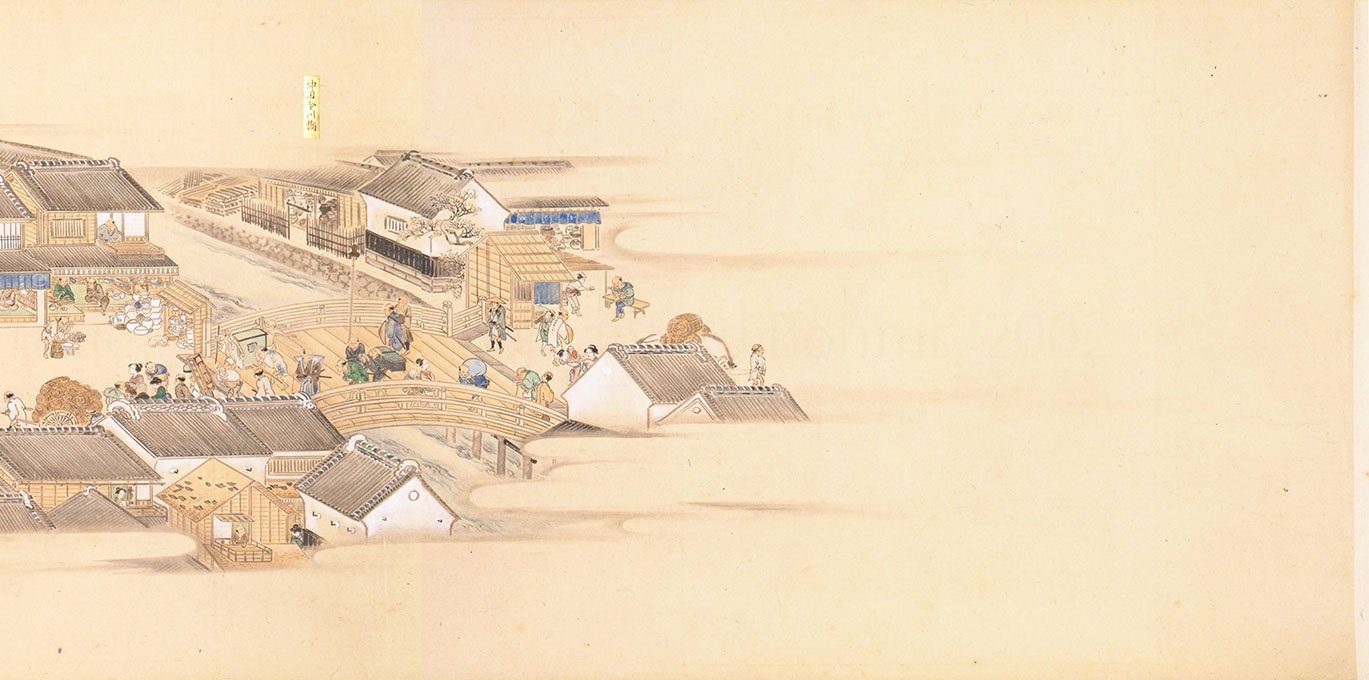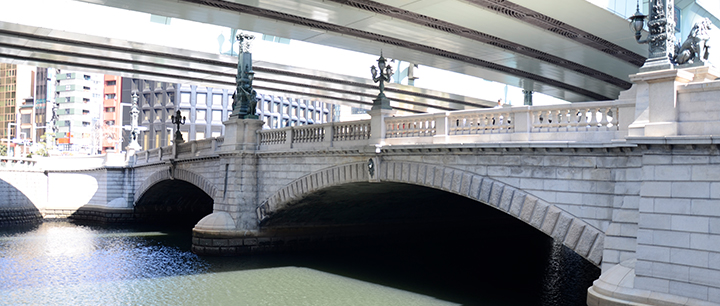With the establishment of the Tokugawa shogunate by Tokugawa Ieyasu, construction of the castle town began in earnest. Mount Kanda was leveled, and the rocks and soil were used to reclaim land in the Yaesu area in front of Edo Castle. To the east of the castle, a residential area was developed for merchants. The Nihonbashi Bridge was built over the canal (now the Nihonbashi River) that was excavated from Edo Castle to the Sumida River. Not far from the bridge, the district of Tenmachō was established as a transit hub that supported traffic and transportation systems. That area became the center of communication and handled the delivery of official documents of the shogunate. Utilizing the Nihonbashi River and the many canals in the area, ships brought goods from all over Japan directly to Edo. The goods were then transferred to smaller boats and delivered to locations along the riverside.
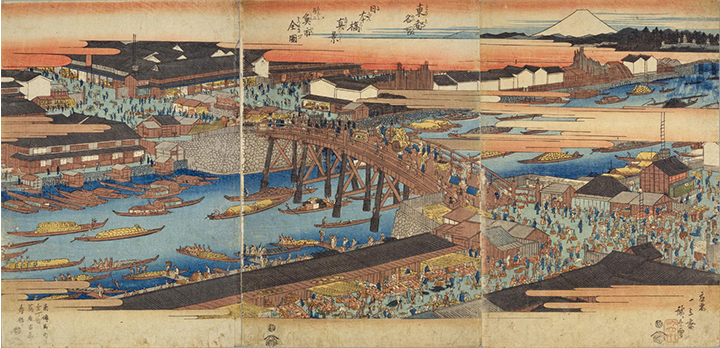 “True View of Nihonbashi Bridge, Together with a Complete View of the Fish Market” From “Tokyo Tōto Meisho” ca. 1830–1844 by Utagawa Hiroshige (1797–1858). (National Diet Library)
“True View of Nihonbashi Bridge, Together with a Complete View of the Fish Market” From “Tokyo Tōto Meisho” ca. 1830–1844 by Utagawa Hiroshige (1797–1858). (National Diet Library)
Edo was very much a “consumer city,” and merchants dealing in various goods, and coming from all over Japan, set up shops in the Nihonbashi area. These merchants procured goods for the shogunate and daimyo, and the area became Japan’s foremost trading center. The Nihonbashi area had riverside fish markets, kabuki theaters, and pleasure quarters officially sanctioned by the shogunate, such as the Yoshiwara. A mint was even established in the area. It was such a profitable district that it was said that 3,000 ryō changed hands every morning, noon, and night. People and information from all over Japan were to be found there, including persons of culture. Along with samurai living in the city, Edo culture was also supported by financially powerful merchants, leading to the flourishing of “merchant culture” during the later Edo period.
The Nihonbashi area was truly a place of prosperity as the center of transportation, economics, and information for all of Japan.
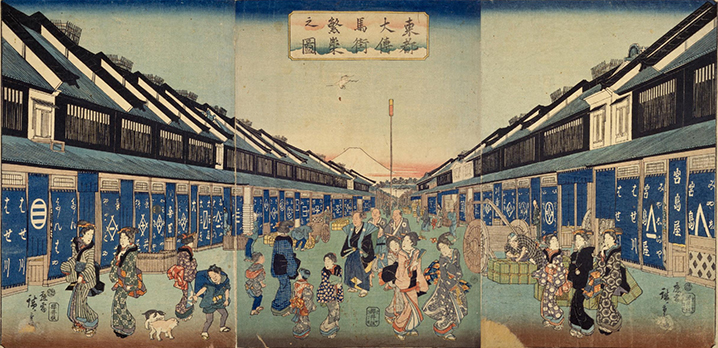 “Edo’s Prosperous Ōdenma District” ca. 1843–1847 by Utagawa Hiroshige. (National Diet Library)
“Edo’s Prosperous Ōdenma District” ca. 1843–1847 by Utagawa Hiroshige. (National Diet Library)
 Kidai Shōran title calligraphy by Sano Tōshū
Kidai Shoran (detail) © Staatliche Museen zu Berlin, Museum für Asiatische Kunst (Asian Art Museum, National Museums in former collection of Hans Joachim and Inge Küster, gift of Manfred Bohms 2002, photography: Tadao Kodaira
Kidai Shōran title calligraphy by Sano Tōshū
Kidai Shoran (detail) © Staatliche Museen zu Berlin, Museum für Asiatische Kunst (Asian Art Museum, National Museums in former collection of Hans Joachim and Inge Küster, gift of Manfred Bohms 2002, photography: Tadao Kodaira

